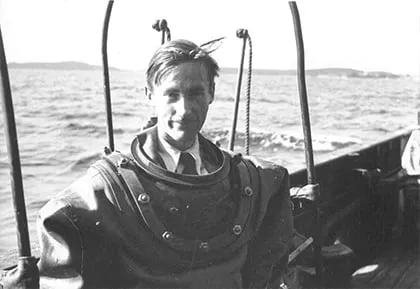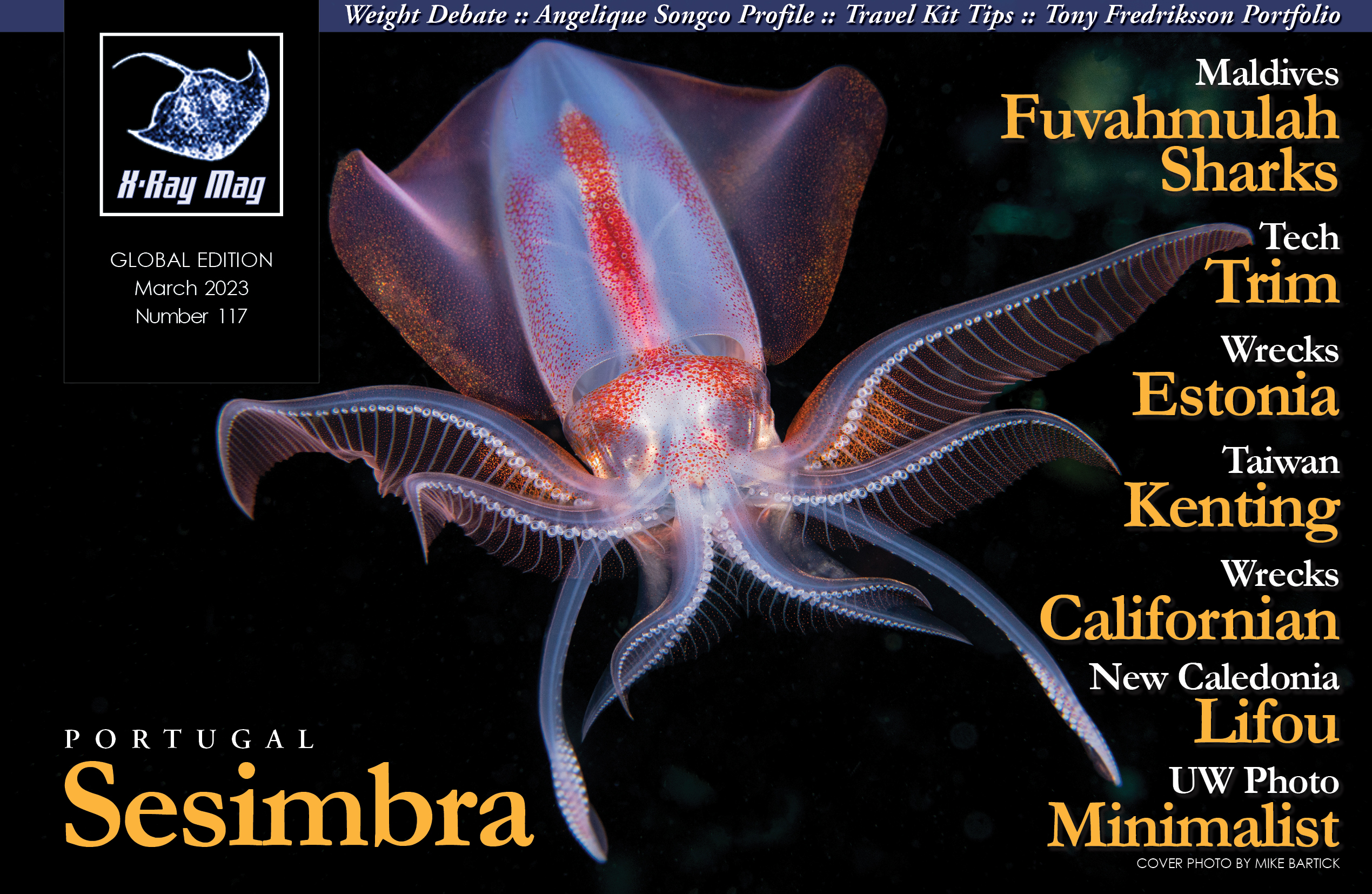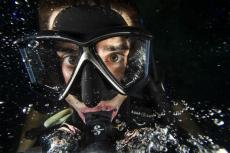In the early part of the 20th century, American physicist and chemist, Professor Elihu Thomson—the person credited with putting the eventual use of helium on the diving menu—had originally proposed the use of hydrogen as a suitable replacement for nitrogen in the breathing mix used by divers. David Strike has the story.
Contributed by
Factfile
Arne Zetterström (1917–1945) is best known for researching hydrox, a breathing mixture, for the Swedish Navy.
In 1943, Zetterström made the first mention of using hydrogen as a breathing gas. Six ocean dives were completed with this mixture between 1943 and 1944, the deepest reaching 160m (on 96% hydrogen and 4% oxygen).
Zetterström encountered technical issues while diving from HSwMS Belos on 7 August 1945. The misreading of his signals by his support divers was followed by a quick ascent, which led to lethal decompression sickness and hypoxia.
(Source: Wikipedia.org)
(Top photo source: Nationaal Archief / Wikimedia Commons / public domain)
The advantages of hydrogen over helium are enormous. Hydrogen is half the atomic weight of helium, less dense, more readily available and far cheaper. However, on the downside, it is also highly flammable, and requires great care in its use—a fact highlighted by the 1937 Hindenberg disaster when the world’s most luxurious airship (a "lighter-than-air" passenger aircraft that halved the time taken by the trans-Atlantic ocean liners travelling between Europe and America) burst into flames, killing 37 of its passengers, when an electrostatic discharge from a securing line ignited escaping hydrogen during landing.
Nevertheless, while the use of hydrogen for airships and Zeppelins came into question, the attraction of hydrogen as an alternative replacement for nitrogen in a diver’s breathing mix continued to encourage research into its use. Austrian physiologist and physician, Hermann von Schrötter (1870 – 1928)—a pioneer of aviation and hyperbaric medicine who made essential contributions to the study of decompression sickness—conducted experiments in the use of hydrogen, as did Swedish researcher Arne Zetterström.

Conducting research into the use of hydrox mixtures for the Swedish Navy, Zetterström made a series of dives in 1943–1944 (the deepest to 160m, using a mix of 96% hydrogen and 4% oxygen) before his untimely death in 1945, in a diving accident unrelated to his use of hydrogen in the breathing mix. Professor J.B.S. Haldane (son of J.S Haldane) also toyed with the idea of using hydrogen and oxygen mixtures and the theoretical advantage of the lighter gas in decompression research.
534m depth
In 1988 four divers from the French diving company Comex (Compagnie Maritime d’Expertise) and two French Navy divers spent eight days in a chamber that was gradually pressurised to a depth equivalent to 53 times that at the surface. The capsule was lowered to depth in the Mediterranean Sea, off Marseilles, where the divers (breathing a gas consisting of 49% hydrogen, 50% helium, and 1% oxygen) took it in turns to exit the chamber on an umbilical hose, spending a total of 28 hours working on pipeline connection exercises at a depth of 534m (1,752ft).
The return to surface pressure took an additional 18 days—a depth record that still stands, but one that highlighted limiting factors to working at depth. Namely, the following:
High-pressure nervous syndrome (HPNS), which manifests itself at around 200m; the effects increase with depth and impair the diver’s efficiency.
Gas density. The effort of moving the gas into and out of the lungs reduces the diver’s efficiency.
Fatigue, accentuated by lengthy periods of saturation.
In 1992, Comex divers set a new depth record with an experimental dry-dive (in a pressurised chamber) to a simulated depth of 701m (2,300ft) for seven hours, but required 24 days of decompression.





























